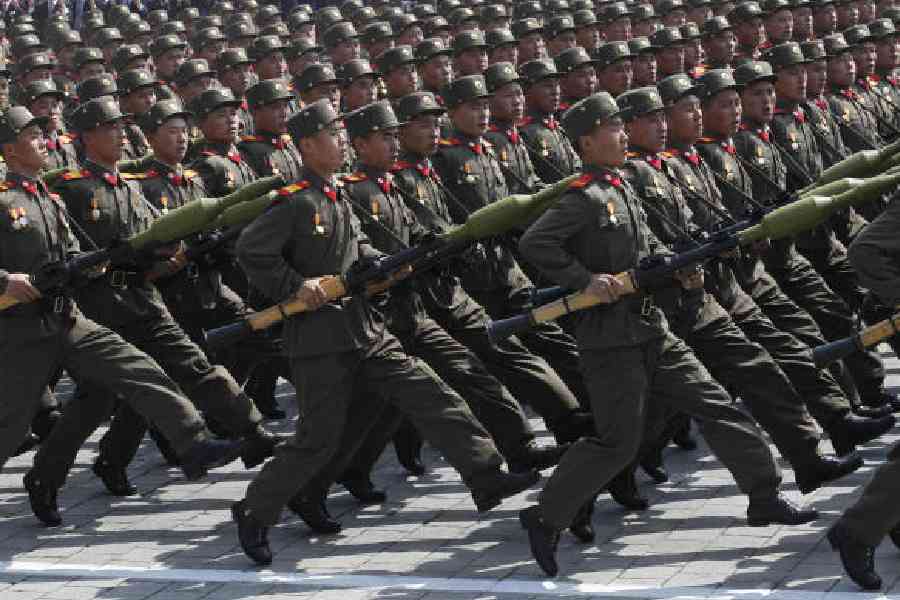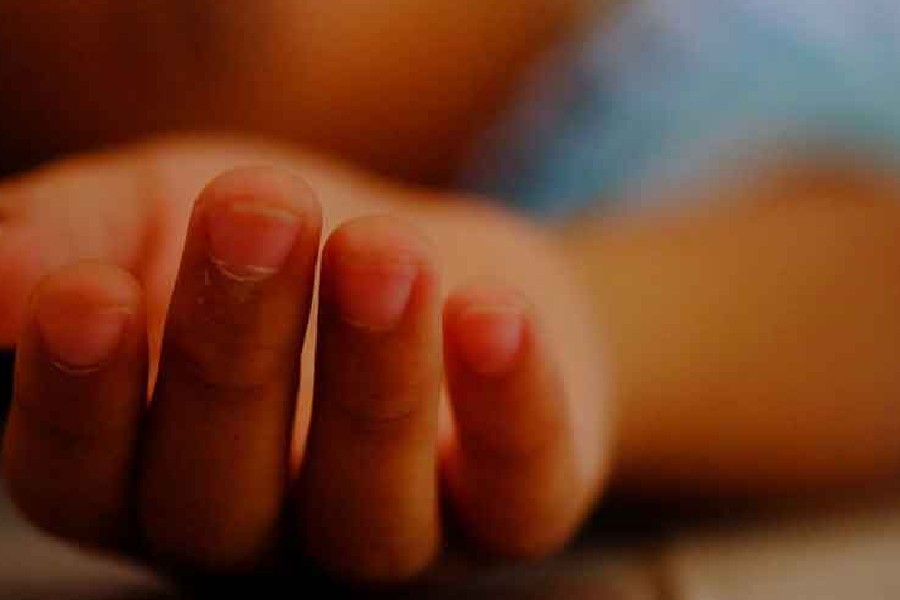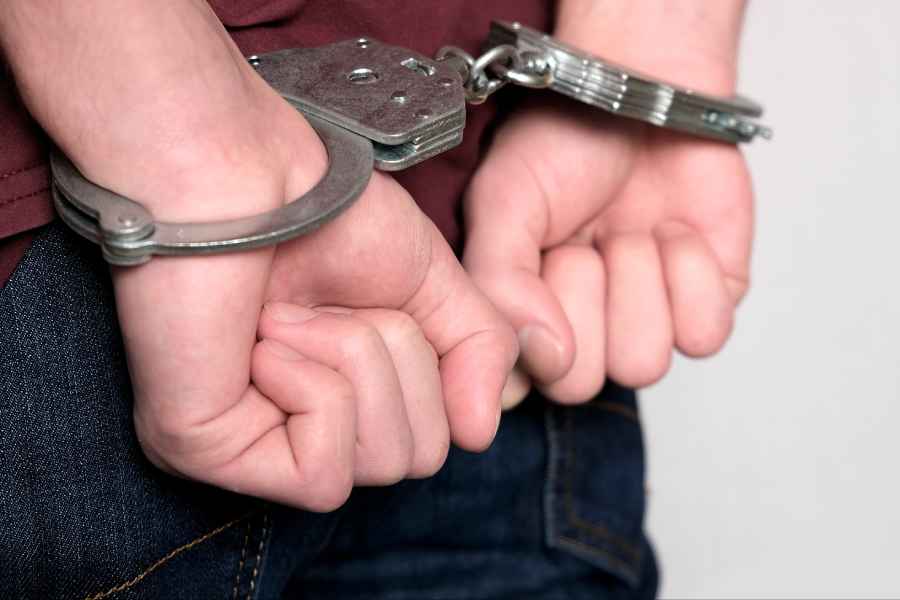For decades, Pyongyang’s growing nuclear arsenal has generated headlines. Now, as thousands of North Korean soldiers pour into Russia to help it fight the war in Ukraine, a much older threat has become relevant again: North Korea’s massive conventional forces, one of the largest in the world.
North Korea is arguably the world’s most militarised country. Its state propaganda calls for “arming the whole population” and defending its leader, Kim Jong-un, as “human rifles and bombs”.
But decades of international sanctions have ravaged the economy in North Korea, which also suffered a famine in the 1990s. As a result, its conventional weapons remain decrepit leftovers from a bygone era when the Soviets helped Pyongyang build up its stocks of artillery shells and rockets. Its pilots seldom fly for a lack of jet fuel. Its army has trouble finding food, fuel and spare parts.
At the same time, North Korean soldiers are required to serve for eight to 10 years, making them some of the longest-serving and most experienced conscripts in the world.
Like the country itself, North Korea’s military and its fighting capabilities remain a mystery. It has not fought a major conflict since the Korean War seven decades ago. As its troops moved abroad for what could be their first major engagement in an armed conflict abroad, North Korea’s state media carried no news on their departure or any going-away ceremonies.
Here is what to know about the North Korean military, formally known as the Korean People’s Army (KPA):
Deployment
South Korea says the troops North Korea has sent to Russia are part of its special operations force, one of the five branches of its military.
These soldiers, an official in the South said, specialise in offensive operations. They are assigned to units with names like “Storm”, “Lightning” and “Thunderbolt” and are trained as snipers and for launching attacks from behind enemy lines. The special operations force is one of the largest in the world, with 200,000 soldiers who are better equipped, trained and fed than their colleagues. Vut some experts questioned this assessment. They cite videos showing North Korean troops in Russia and say that the images of the troops — many short in height and slight in physique — suggest they belong to engineering corps that spent more time on Kim’s construction projects than on combat-training grounds.
“They are not wearing their own uniforms, instead disguising themselves in Russian uniforms, having no operational control but just following Russian orders,” Kim Yong-hyun, the defence minister of South Korea, told lawmakers on Thursday. “North Korea is not sending troops but rather cannon-fodder mercenaries.”
Capability
Despite its food shortages, North Korea maintains 1.3 million active-duty soldiers and keeps 7.6 million — or 30 per cent of its population — as reservists, making it the world’s fourth-largest military. It relies on a draft to keep up the high troop levels, requiring men to serve for eight to 10 years and women for five years. It has 4,300 tanks, 8,800 artillery pieces, 810 fighter planes and 70 submarines, according to South Korea.
Under its “military-first” policies, the armed forces receive the lion’s share of government resources. Some estimates put North Korea’s annual military spending as high as a quarter of its gross domestic product. The military runs its own vast network of farms, trading companies, fishing and mining operations.
But at the end of the Cold War, Pyongyang lost direct military-to-military support from Soviet Russia and China — leaving its conventional weapons systems outdated.
Kim has tried to compensate for those weaknesses by initiating a modernisation campaign and building so-called asymmetrical capabilities, developing nuclear missiles and stockpiling 5,000 tons of chemical weapons, according to South Korean officials. His arsenal includes 6,800 hackers who can attack enemy computer networks.
The war in Ukraine has at times assumed the elements of a nuclear crisis, as Russia’s leader, Vladimir. V. Putin, has moved to deter the US from expanding military aid for Ukraine. Like Putin, North Korea’s Kim has openly threatened to use nuclear weapons if war breaks out in Korea.
Effective troops
In the past, elite North Korean commandos have caused havoc in South Korea. In 1968, they came within striking distance of the residence of the South Korean President but failed to assassinate him. In other commando incursions, some North Korean soldiers have killed themselves rather than being caught by the enemy. A few have made it safely back to the North even though South Korea mobilised army divisions to pursue them.
But the harsh life in North Korea means any travel abroad carries the possibility of defection. Even when Pyongyang has sent workers to toil in isolated places like Siberia and the Libyan Desert, it required them to leave their families behind and spy on each other, a way to deter them from defecting.
The young North Korean soldiers who appear to be headed to Ukraine are from the generation that grew up in the wake of the devastating famine in the 1990s. Travelling through Russia is likely to be their first encounter with the outside world, one that is vastly freer and more affluent than their homeland.
“You cannot control people in a battlefield as well as you do in Siberian forests or Libyan deserts,” said Lee Min-bok, a North Korean defector in Seoul. “I expect more and more North Korean soldiers will desert their units as the war drags on.”
KPA’s role
The military is a lifeline for many in the impoverished country. And officials treat service as a prerequisite for membership in the ruling Workers’ Party, the ultimate status symbol in the country.
Like the Russian army, North Korea’s KPA has a rigidly top-down command structure. But the long service terms mean that it has many experienced soldiers playing the role comparable to that of non-commissioned officers in the US Army, military experts said. But most ordinary soldiers suffer the effects of chronic food shortages and rampant corruption, they said. When a North Korean soldier defected to the South in 2017, doctors found his intestines riddled with parasitic worms.
For decades, North Korea has pursued “military-first” politics, depending on its armed forces as the most important tool of solving its social, economic and political problems.
When Kim became the country’s leader, at age 27, he first took control of the military and engineered a series of bloody purges to eliminate old generals, replacing them with officers loyal to him. He mobilised large numbers of soldiers to build dams and apartments and to help farmers.
His military helps fill his coffers by selling weapons and seafood, and stealing cash through cyber thefts. Its military threat is the strongest diplomatic leverage Kim had to force Washington to the negotiating table. Kim glorifies his military through regular parades and his frequent visits to weapons tests.
“The North Korean army is the sine qua non to the Kim Jong-un regime’s survival,” said Sung-Yoon Lee, a fellow at the Woodrow Wilson International Center for Scholars. “It is also a blue-chip business model, the nation’s most valuable asset for extorting revenue. Over the past 30 years, Pyongyang has received tens of billions of dollars in cash and material aid like food, fuel and fertiliser by exporting threats and double-dealing in denuclearisation talks.”
New York Times News Service










